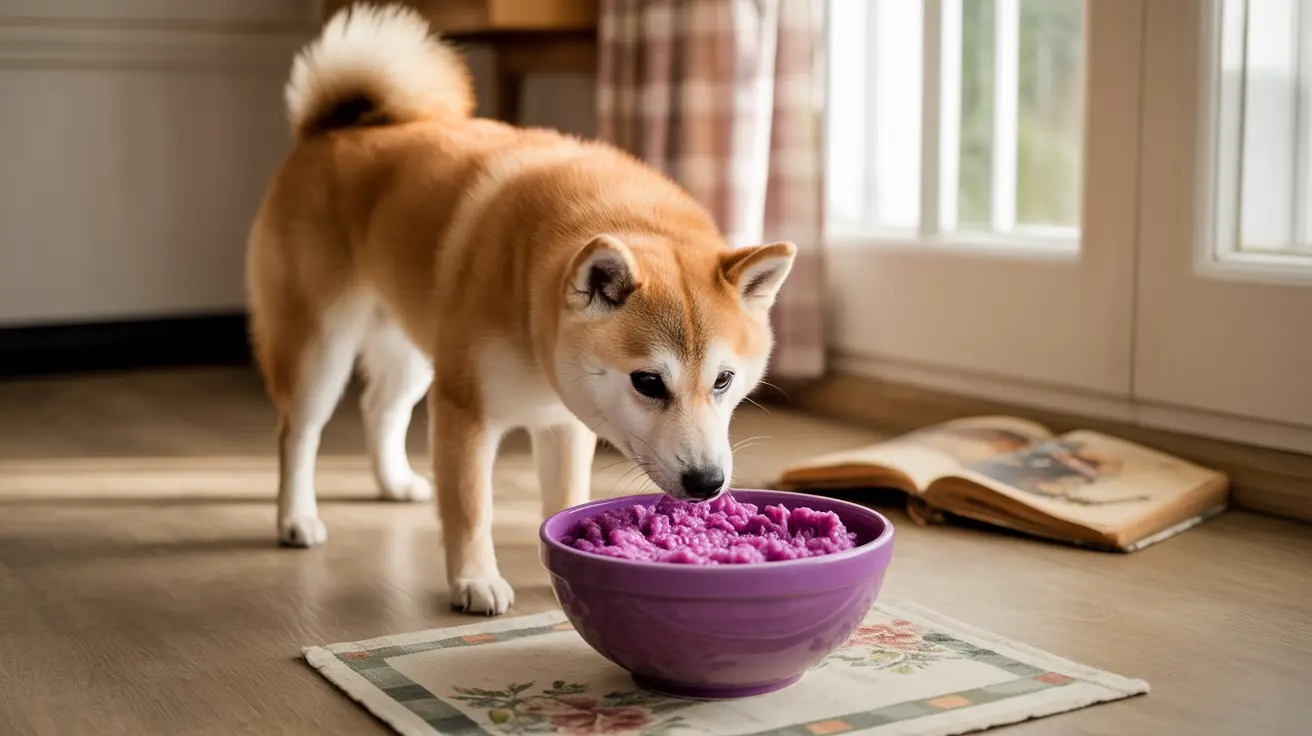If you're a dog owner living in Hawaii or familiar with Pacific Island cuisine, you might wonder about sharing poi with your furry friend. Poi, a traditional Hawaiian food made from mashed taro root, raises important safety questions when it comes to canine consumption. Let's explore whether dogs can eat poi and understand the crucial differences between poi and raw taro.
While poi is generally less dangerous than raw taro, pet owners should approach this food with caution. This comprehensive guide will help you understand the risks and safety considerations of feeding poi to your dog, along with important information about taro in all its forms.
Understanding Poi and Taro
Poi is a traditional Hawaiian food created by mashing cooked taro root into a smooth paste. The cooking process used to make poi significantly reduces the harmful compounds found in raw taro, making it less dangerous than its uncooked counterpart. However, this doesn't automatically make it a safe choice for your dog.
The Safety of Poi for Dogs
When it comes to poi, moderation is key. While plain, cooked poi is generally less risky than raw taro, it's not necessarily a recommended addition to your dog's diet. The primary concerns include:
- High starch content that can contribute to weight gain
- Potential digestive issues in sensitive dogs
- No significant nutritional benefits for canines
- Possible remnants of oxalate crystals even after cooking
The Dangers of Raw Taro
Raw taro is absolutely off-limits for dogs. It contains calcium oxalate crystals that can cause:
- Severe mouth and throat irritation
- Difficulty swallowing
- Excessive drooling
- Vomiting and diarrhea
- Potential kidney damage
- Respiratory issues in severe cases
What to Do If Your Dog Eats Taro or Poi
If your dog consumes raw taro or large amounts of poi, take these immediate steps:
- Contact your veterinarian immediately
- Monitor for signs of distress or discomfort
- Don't induce vomiting unless directed by a professional
- Watch for symptoms of allergic reactions or digestive issues
Healthier Alternatives to Poi
Instead of poi, consider these safer treat options for your dog:
- Carrots
- Blueberries
- Sweet potatoes (properly cooked)
- Green beans
- Apple slices (without seeds)
Frequently Asked Questions
Is poi safe for dogs to eat, and can I share it with my pet?
While plain, cooked poi is less dangerous than raw taro, it's not recommended as a regular treat for dogs. If you choose to offer it, do so in very small amounts and only occasionally. Always ensure it's plain without any additives or seasonings.
What are the symptoms if my dog eats raw or cooked taro, including poi?
Symptoms can include excessive drooling, difficulty swallowing, vomiting, diarrhea, pawing at the mouth, and oral swelling. Raw taro consumption may lead to more severe symptoms, including respiratory issues and kidney problems.
How should I respond if my dog accidentally consumes taro or poi?
Contact your veterinarian immediately, especially if raw taro was consumed. Monitor your dog closely for any signs of distress and follow your vet's instructions. Don't attempt home remedies without professional guidance.
Can cooked taro or poi cause kidney problems in dogs?
While cooked taro and poi are less likely to cause kidney problems than raw taro, there's still a risk, especially with regular consumption. The oxalate crystals in taro can potentially damage the kidneys over time.
Are there safer alternatives to taro or poi for dog treats?
Yes, many safer alternatives exist, including carrots, blueberries, and cooked sweet potatoes. These options provide better nutritional benefits and pose fewer risks than taro or poi-based treats.
Conclusion
While poi is less dangerous than raw taro, it's best to err on the side of caution and choose other treat options for your dog. If you do decide to offer poi, keep portions tiny and infrequent, and always monitor your pet for any adverse reactions. Remember, your dog's health and safety should always come first, and there are many safer treat alternatives available.






